
Best practices of green production, the need for training and tools as well as financial support are topics that are discussed by filmmakers all across Europe. In the fall 2019, Green Film Shooting participated with speeches and moderation at international conferences and symposiums in various places. The conditions in every country are different but almost anywhere is a growing number of filmmakers who want to take action to produce their films more environmentally friendly.
The  efforts that are taken to reduce the carbon footprint of a production are mainly focused on the preparation and the shooting of a film while post production is often disregarded. The decisions in the post production phase should also be considered in terms of sustainability. “For my last Tatort, I had to fly twelve times to Berlin because the audio post production is cheaper there”, reported Michael Imboden, Production Manager at Swiss production company Triluna Film, at the Action For Climate On Set discussion at the Industry Hub of the Zurich Film Festival. “In the end, more than 40 plane rides were taken for the audio post production”, said the production manager. Productions go where they get money or the cheapest price if the quality remains the same.
efforts that are taken to reduce the carbon footprint of a production are mainly focused on the preparation and the shooting of a film while post production is often disregarded. The decisions in the post production phase should also be considered in terms of sustainability. “For my last Tatort, I had to fly twelve times to Berlin because the audio post production is cheaper there”, reported Michael Imboden, Production Manager at Swiss production company Triluna Film, at the Action For Climate On Set discussion at the Industry Hub of the Zurich Film Festival. “In the end, more than 40 plane rides were taken for the audio post production”, said the production manager. Productions go where they get money or the cheapest price if the quality remains the same.
Careful planning is required to reduce the carbon emissions that are often generated when team members have to travel long distances and move equipment with big trucks. The planning process already starts with the script, and, of course, the selection of locations. This issue was discussed at the Global Green Medi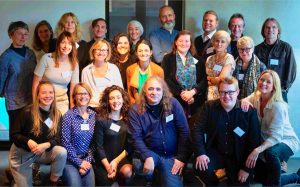 a Production Network in London, which was hosted by Pietari Kääpä, Professor at University of Warwick and Hunter Vaughan, Professor at University of Colorado Boulder. When the Belgian crime thriller Gangsta was shot in Antwerp, the production managed to store the trucks overnight at a parking lot close to the set and accommodate the crew members near by. “Normally, each person would commute back and forth between their home, the depot where the rented truck was kept and the set”, explained Tim Wagendorp, Sustainability Coordinator, Flanders Audiovisual Fund. “By allowing both people and trucks to spend the night locally, the production significantly reduced the number of kilometres driven.” Thanks to the logistic optimization, the production saved about 19,000 km which came down to an amount of almost 10,000 euros and three ton of CO2.
a Production Network in London, which was hosted by Pietari Kääpä, Professor at University of Warwick and Hunter Vaughan, Professor at University of Colorado Boulder. When the Belgian crime thriller Gangsta was shot in Antwerp, the production managed to store the trucks overnight at a parking lot close to the set and accommodate the crew members near by. “Normally, each person would commute back and forth between their home, the depot where the rented truck was kept and the set”, explained Tim Wagendorp, Sustainability Coordinator, Flanders Audiovisual Fund. “By allowing both people and trucks to spend the night locally, the production significantly reduced the number of kilometres driven.” Thanks to the logistic optimization, the production saved about 19,000 km which came down to an amount of almost 10,000 euros and three ton of CO2.
Lo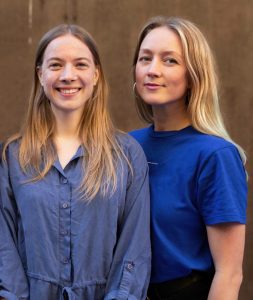 cated at the Stanley Building, the former Google headquarters, the two-day symposium brought together scholars, media professionals, NGOs, policy advocates, scientists, and science communicators from Europe, US and Australia who presented different approaches how to teach, train and assist film and television professionals to act more environmentally friendly. Among the participants were Josefine Madsen and Anne Lund, who launched the Danish sustainable consultancy Jordnær Creative. The start up company will guide Danish media producers in responsible consumption and eco-friendly production methods.
cated at the Stanley Building, the former Google headquarters, the two-day symposium brought together scholars, media professionals, NGOs, policy advocates, scientists, and science communicators from Europe, US and Australia who presented different approaches how to teach, train and assist film and television professionals to act more environmentally friendly. Among the participants were Josefine Madsen and Anne Lund, who launched the Danish sustainable consultancy Jordnær Creative. The start up company will guide Danish media producers in responsible consumption and eco-friendly production methods.
Co mmunications is central! Please explain and don’t just take away the plastic water bottles, was one of the messages at the Sustainability and Green Film Making panel at the Responsible Production conference in Dublin, hosted by Screen Skills Ireland. The national training center provides Irish producers with the BAFTA Albert Carbon Calculator which is already used by the industry in the UK. The tool will help them to understand the environmental impact of their productions. As many productions already proved, going green is not more expensive. Adding elements of sustainability, such as creative re-use strategies, can in fact help keep budgets down. In Ireland will be new requirements linked to the Section 481 tax credit for productions, which requires applicants to propose skills development plans as well as diversity, inclusion, gender, and sustainability initiatives to avail of the credit.
mmunications is central! Please explain and don’t just take away the plastic water bottles, was one of the messages at the Sustainability and Green Film Making panel at the Responsible Production conference in Dublin, hosted by Screen Skills Ireland. The national training center provides Irish producers with the BAFTA Albert Carbon Calculator which is already used by the industry in the UK. The tool will help them to understand the environmental impact of their productions. As many productions already proved, going green is not more expensive. Adding elements of sustainability, such as creative re-use strategies, can in fact help keep budgets down. In Ireland will be new requirements linked to the Section 481 tax credit for productions, which requires applicants to propose skills development plans as well as diversity, inclusion, gender, and sustainability initiatives to avail of the credit.
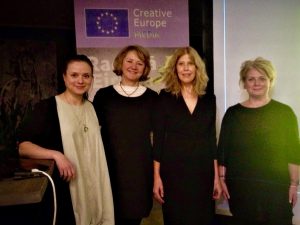 In Latvia, sustainable film production started rolling. At the Creative Europe MEDIA conference in Riga, the production team from Juris Podnieks Studio presented Jelgava ’94, the first film in Latvia that was produced as environmentally friendly as possible. Inspired by Green Film Shooting’s Shades of Green panel discussion at the 2015 Berlin International Film Festival, producer Antra Cilinska and Elizabete Palasiosa decided to shoot the first green film in Latvia. “We set us goals that we can reach”, explained producer Elizabete Palasiosa who acted as green runner on set. One goal was to reduce waste as much as possible. The team used second hand props for the decoration while single-use dishes and bottles were banned. In order to avoid food waste they ordered simply less. Instead of the normal calculation, the amount of food was reduced from 100 to 85 percent which worked well. “It is all about changing your attitude”, underlined Antra Cilinska. “Going green is a process.” In addition to the communication in the early stage of production, during the 27 shooting days of Jelgava ’94 two lectures on sustainability were hold on set. Every day, a green tip was given to cast and crew. In total, the production saved 15,000 kWh energy, 1,576 l fuel and more than 4,180 plastic water bottles. Jelgava ’94 is the first Latvian production that received a Green Shooting Card by the Filmförderung Hamburg Schleswig-Holstein.
In Latvia, sustainable film production started rolling. At the Creative Europe MEDIA conference in Riga, the production team from Juris Podnieks Studio presented Jelgava ’94, the first film in Latvia that was produced as environmentally friendly as possible. Inspired by Green Film Shooting’s Shades of Green panel discussion at the 2015 Berlin International Film Festival, producer Antra Cilinska and Elizabete Palasiosa decided to shoot the first green film in Latvia. “We set us goals that we can reach”, explained producer Elizabete Palasiosa who acted as green runner on set. One goal was to reduce waste as much as possible. The team used second hand props for the decoration while single-use dishes and bottles were banned. In order to avoid food waste they ordered simply less. Instead of the normal calculation, the amount of food was reduced from 100 to 85 percent which worked well. “It is all about changing your attitude”, underlined Antra Cilinska. “Going green is a process.” In addition to the communication in the early stage of production, during the 27 shooting days of Jelgava ’94 two lectures on sustainability were hold on set. Every day, a green tip was given to cast and crew. In total, the production saved 15,000 kWh energy, 1,576 l fuel and more than 4,180 plastic water bottles. Jelgava ’94 is the first Latvian production that received a Green Shooting Card by the Filmförderung Hamburg Schleswig-Holstein.
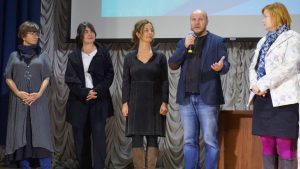 Green Film Shooting delegate and Sustainability Consultant Katja Schwarz attended the 9th Barents Ecology Film Festival in Russia and Finland, where she hold a Green Filmmaking Workshop in Petrozavodsk and Joensuu. Among the participants of the event where national and international directors as well as the American Theatre Director Timothy Nutter. The wokshop was rounded up with a presentation by eco activist Michail Gusatov, who is also a co-organizer of the Barents Ecology Film Festival. He gave an insight into the new waste management system which will be introduced in Russia. Until now, about 95% of the waste ends up in a landfill. Russia plans to increase the recycling quota up to 90% by installing waste managment bins. While the organic waste can be used for biogas plants as we as fertilizers on the fields, other resources may be resused to build the ground for railroad tracks. Waste management is also the key topic in the Italian documentary La grande monnezza (Life by the Landfill) by Chiara Bellini that premiered at the festival.
Green Film Shooting delegate and Sustainability Consultant Katja Schwarz attended the 9th Barents Ecology Film Festival in Russia and Finland, where she hold a Green Filmmaking Workshop in Petrozavodsk and Joensuu. Among the participants of the event where national and international directors as well as the American Theatre Director Timothy Nutter. The wokshop was rounded up with a presentation by eco activist Michail Gusatov, who is also a co-organizer of the Barents Ecology Film Festival. He gave an insight into the new waste management system which will be introduced in Russia. Until now, about 95% of the waste ends up in a landfill. Russia plans to increase the recycling quota up to 90% by installing waste managment bins. While the organic waste can be used for biogas plants as we as fertilizers on the fields, other resources may be resused to build the ground for railroad tracks. Waste management is also the key topic in the Italian documentary La grande monnezza (Life by the Landfill) by Chiara Bellini that premiered at the festival.
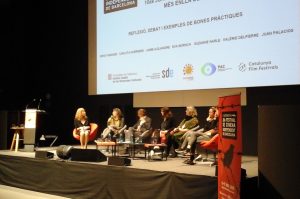 Economizing resources from preproduction to exhibition was also a topic at the Beyond the Green Shooting Card symposium in Barcelona, hosted by the Barcelona Independent Cinema Festival l’Alternativa. The green conference brought together industry representatives from production companies, film festivals, distribution outlets, film commissions and film funds who discussed different criteria for sustainable filmmaking and which steps needs to be taken first.
Economizing resources from preproduction to exhibition was also a topic at the Beyond the Green Shooting Card symposium in Barcelona, hosted by the Barcelona Independent Cinema Festival l’Alternativa. The green conference brought together industry representatives from production companies, film festivals, distribution outlets, film commissions and film funds who discussed different criteria for sustainable filmmaking and which steps needs to be taken first.
 Created as an event for young student filmmakers, the 2019 up-and-coming International Film Festival Hannover provided a Melting Pot which was dedicated to green production for the first time. Paul Bullinger, film production graduate at Konrad Wolf University in Potsdam-Babelsberg, shared his experience as producer while Petra Sommer presented the sustainability concept of the Hanseatische Materialverwaltung. At the Hamburg-based stock, props and decoration material from film and TV productions are collected and get a second and third life in further productions. Indeed, there is a need to support the implementation of the circular economy in film production. Rethinking is required and efficient planning, planning, planning. It won’t save the world if ambitious activists only collect signatures and logos on digital platforms. Action.. please – here and now in 2020!
Created as an event for young student filmmakers, the 2019 up-and-coming International Film Festival Hannover provided a Melting Pot which was dedicated to green production for the first time. Paul Bullinger, film production graduate at Konrad Wolf University in Potsdam-Babelsberg, shared his experience as producer while Petra Sommer presented the sustainability concept of the Hanseatische Materialverwaltung. At the Hamburg-based stock, props and decoration material from film and TV productions are collected and get a second and third life in further productions. Indeed, there is a need to support the implementation of the circular economy in film production. Rethinking is required and efficient planning, planning, planning. It won’t save the world if ambitious activists only collect signatures and logos on digital platforms. Action.. please – here and now in 2020!
Photos: © Industry Hub/Zurich Film Festival, Jordnær Creative, Screen Skills Ireland, MEDIA Creative Desk Lavia, Barents Ecology Film Festival, GFS




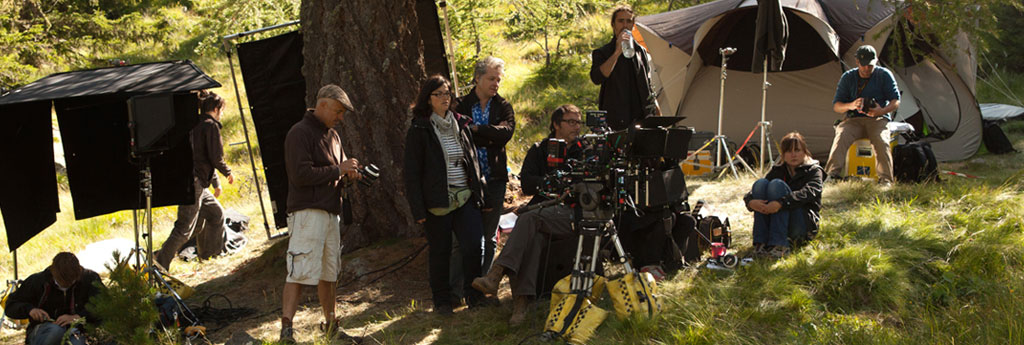







 Robert Redford
Robert Redford Hannes Jaenicke
Hannes Jaenicke Nic Balthazar
Nic Balthazar Nadeshda Brennicke, Actress
Nadeshda Brennicke, Actress Darren Aronofsky, Director, Noah / Jury President, 65th Berlin International Film Festival
Darren Aronofsky, Director, Noah / Jury President, 65th Berlin International Film Festival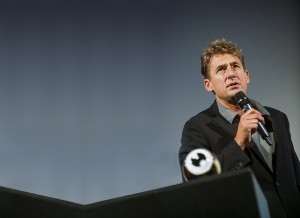 Tim Bevan
Tim Bevan Thekla Reuten
Thekla Reuten Rachael Joy
Rachael Joy Nikola Rakocevi
Nikola Rakocevi Nadja Schildknecht
Nadja Schildknecht Michael Bully Herbig
Michael Bully Herbig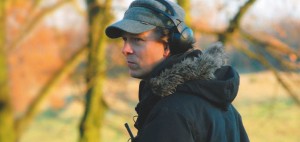 Lars Jessen
Lars Jessen Helen Hunt
Helen Hunt Douglas Trumbull
Douglas Trumbull Dieter Kosslick, Director Berlin International Film Festival
Dieter Kosslick, Director Berlin International Film Festival Benoit Delhomme
Benoit Delhomme Jeremy Irons
Jeremy Irons